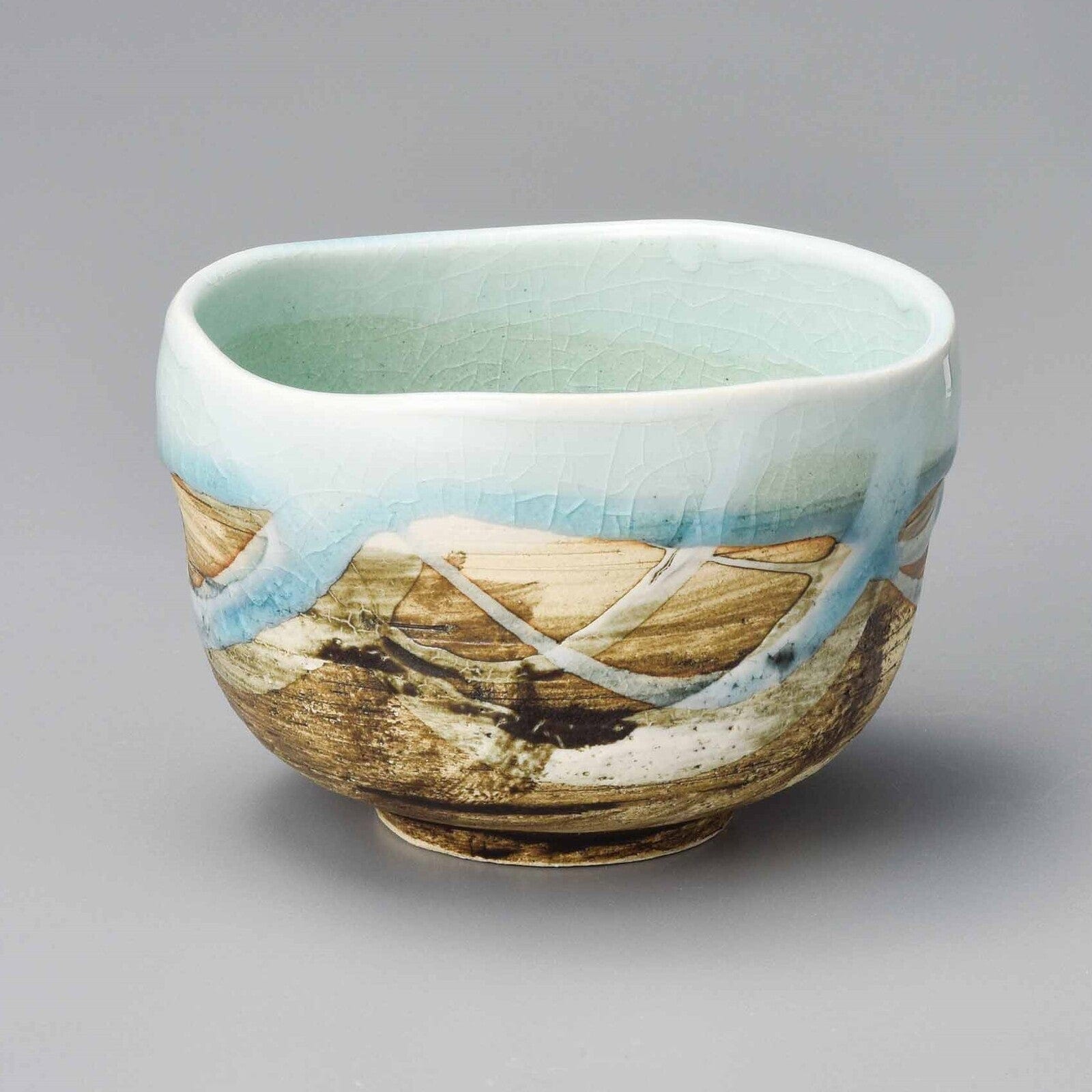

Kakurin blue and white color Matcha Bowl
Fast & Secure Delivery from Japan to your Door [Shipping Policy]
Shop Safely with Encrypted Checkout and Verified Gateways.
Pairs well with

Kakurin blue and white color Matcha Bowl
Everyday Tranquility – Handcrafted Mino Ware Tea Bowl Inspired by Nature’s Flow
Immerse yourself in the refined simplicity of this handcrafted Mino ware tea bowl, a piece shaped by centuries of Japanese ceramic mastery. Born in the mountainous heart of Gifu Prefecture, Mino ware has quietly shaped the daily lives of people in Japan for over 1,300 years. Today, it accounts for more than half of the country’s ceramic tableware—a testament to its enduring appeal and trusted quality.
The natural asymmetry of this bowl isn’t a flaw—it's a feature. The gently curved rim and unique surface pattern reflect the Japanese philosophy of wabi-sabi: finding beauty in imperfection. Its soothing glaze—an ethereal mix of soft blue, white, and warm earthy tones—recalls the calm of river stones under water, making each sip of tea a moment of mindful escape.
Crafted using traditional techniques, this tea bowl not only offers visual depth but tactile richness. Its surface bears subtle textures and a pleasing weight in hand, grounding you in the moment whether you're preparing matcha, sipping green tea, or simply admiring its form.
Why Choose Mino Ware?
Mino ware's legacy began with imported techniques from the Korean peninsula and matured during Japan’s Heian and Edo periods. Beloved by tea masters and embraced by the modern world, this form of pottery has adapted through centuries—from handmade kilns to today's refined production methods—without losing its soul.
Each piece carries this lineage forward, blending everyday usability with timeless beauty. More than just a bowl, it’s a celebration of resilience, nature, and design.
Bring home a piece of Japan’s ceramic heartland—and elevate your tea experience with an object that speaks not only to taste, but to time.
Product Information
Care instructions
Note
FAQs
All you need to know about Tokoname Ware.
What is Tokoname ware, and why is it so special?
Tokoname ware (常滑焼, Tokoname-yaki) is a traditional form of Japanese pottery that originates from Tokoname City in Aichi Prefecture, one of the Six Ancient Kilns of Japan. With over 900 years of history, it is celebrated for its distinctive use of iron-rich red clay, which is often left unglazed to allow the clay’s natural beauty to shine. This unglazed surface develops a soft sheen and character with age and use, especially when used with tea. Tokoname ware is renowned for its balance of rustic charm, elegant simplicity, and everyday functionality, making it both a collector’s favorite and a staple of modern Japanese homes.
Why are Tokoname teapots (kyūsu) especially valued by tea lovers?
Tokoname’s side-handled teapots, or kyūsu, are highly prized in Japanese tea culture for their superb heat retention, smooth pour, and the unique way the unglazed clay enhances the flavor of green tea—particularly sencha and gyokuro. The clay subtly absorbs tea oils over time, enriching the aroma and depth of future brews. Many Tokoname teapots also feature built-in ceramic mesh filters, which allow for a clean, refined pour without metal interference. These qualities, paired with minimalist design and ergonomic handling, make Tokoname teapots a must-have for serious tea enthusiasts.
Is Tokoname ware always red? Are there other styles or finishes?
While Tokoname ware is most famously associated with its iconic reddish-brown clay, not all pieces are the same. The region’s artisans also produce wares with black, gray, or ash-glazed finishes, depending on the firing techniques, clay blends, and whether they use oxidation or reduction kilns. Some artists incorporate modern design sensibilities, experimenting with glazes and forms, while others preserve traditional aesthetics. Regardless of style, the unifying theme is a commitment to natural textures, balanced forms, and the philosophy of wabi-sabi—the beauty of imperfection and impermanence.
Can Tokoname ware be used daily, or is it mostly decorative?
Tokoname ware is not only beautiful—it’s also highly functional and durable, intended for everyday use. Items like teapots, cups, planters, and incense holders are made to be used regularly. The clay’s natural heat resistance and strength make it ideal for repeated brewing and handling. That said, as with all artisanal ceramics, a little care goes a long way. Avoid using Tokoname ware in microwaves or dishwashers (especially unglazed pieces), and hand wash with warm water only. With proper care, these pieces can last a lifetime and become even more beautiful with age.
How do I know if a piece is authentic Tokoname ware?
Authentic Tokoname ware is typically handcrafted in Tokoname City by artisans who are part of long-established studios or kilns. Many genuine pieces bear a maker’s seal or signature, often engraved or stamped on the base. You may also find regional certifications or documentation when purchasing from reputable sources. Look for details that reflect handcraftsmanship—subtle variations in glaze, slight asymmetry, or a tactile surface. Buying from trusted retailers or directly from workshops ensures authenticity and helps support the preservation of Tokoname’s cultural heritage.

